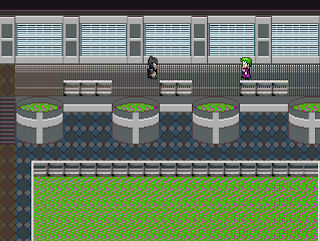| Fire? What Fire? |
Artist: Andrea Sorrentino and Marcelo Maiolo
Collects: Green Arrow #17-24 and #23.1
Background Information:
When DC rebooted its entire line in 2011, Green Arrow, written by Dan Jurgens, was fairly ordinary. It wasn't awful, but wasn't going to carry character to greatness. DC didn't like that, so they gave the line to Ann Nocenti.
And it got worse. So bad that none would have been surprised if it was cancelled. The series needed a shot in the arm, and it needed it badly. Who could possibly do that, though?
Review:
It turns out that DC got just the right people on the job. The new team not only revived the series, but gave it extra depth, and a greater expanded mythos that is engaging and entertainnig as anything.
Who is this creative team? Well, the writer is Jeff Lemire, who worked on books like the New 52 Animal Man; a run that completely redifined the character and recieved critical praise the whole way through. He's a writer who knows how to change title characters in compelling ways, and add lore to their stories that turns the status quo on its head while remaining true to the history of the character.
| How to escape a boring conversation: Method One. |
In The Kill Machine, Lemire reinvents Green Arrow by adding an extra layer to his origin story. The Kill Machine starts with Green Arrow/Oliver Queen mad as hell that he has lost him company, Q-Tech to another firm. While he's growling at Emerson, the man running the whole joint, he is attacked and Emerson is killed. After fighting the killer, an archer named Komodo, he saved by eyeless dude, Magus. Magus reveals something about Oliver's past that he never thought possible: that he was never meant to leave the island.
What follows is a fact-finding mission that sees Oliver go across America, then across the world. Why wasn't Oliver meant to leave and how does Komodo factor into this? Looking at individual events, this story is pretty unremarkable. What is does really, really well, however, is drag you into this world of secret societies, politial intrigue and mysticism. And does it ever suck you in?! You find yourself wanting to know more about this world, and learn every secret it's holding.
Lemire also gives us a new status quo. By the end of the first issue, all but one of Lemire's old supporting cast is dead, and the replacements? Well, we have Henry Fyff, who is one of Oliver's new "build stuff and give info" team along with still-surviving Naomi. Even more surprising, though, is the appearance of John Diggle; Diggle was a character introduced in the Arrow TV show and ended up being well-loved. This is hardly the first time a character from another medium has found their way into comics (see Harley Quinn, Jimmy Olsen and nearly every Transformer ever), but it's nice to see a great character get recognised. I can only hope, though, that Green Arrow doesn't become an alternate season of Arrow, though; I like it when TV and comics properties feel like their own thing.
| How it feels to read this book. |
If there's one thing I can fault The Kill Machine with, it's Lemire's treatment of Count Vertigo. The Count's a central villain in the Green Arrow mythos and deserves to be treated well. Lemire makes an honest effort to reinvent the character, but the reinvention falls short, resulting in the least entertaining issues in the book.
But that's a small complaint for The Kill Machine, which gets a highly deserving four and a half out of five shots in the arm.
**** 1/2
+ Lemire adds excellent substance to the mythos.
+ New status quo is very interesting.
+ Best New 52 art- bar none.
- Count Vertigo doesn't make the book great.
Alternate Option: Green Arrow: The Midas Touch
An inferior book, really, but you could do worse for the New 52's Green Arrow.










